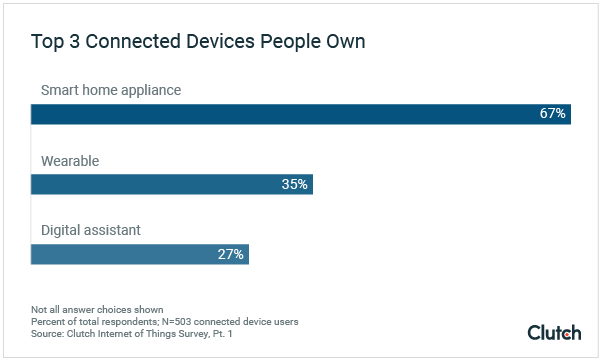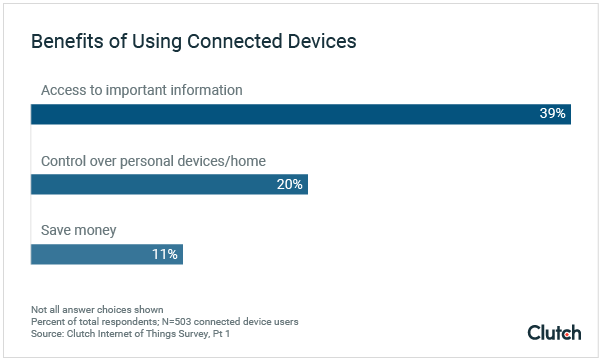In a technological utopia, all your devices and appliances would be linked together over the Internet, seamlessly communicating with one another and exchanging information.
This is the Internet of Things(IoT), a concept that’s been kicking for a while, and it certainly appears to be gaining traction. A study conducted by Clutch Co. revealed that out of its 503 participants, 67 per cent say they own smart home appliances. In addition, 35 per cent own a wearable device, and 27 per cent own digital assistants.

But even with these smart features at their disposal, most users don’t see them as an integral part of their lives. Only 36 per cent say they depend on smart devices in their daily lives. A majority – 64 per cent – reported that they can accomplish their day-to-day tasks without their connected devices.
Instead, smart devices, especially smart appliances which 67 per cent of people own, are being used independently, just as like “dumb” appliances without smart features.
The reason behind the lack of smarts is a surprisingly simple one. As Pavel Shylenok puts it, regardless of whether you set the temperature of your smart oven on another device, you still need to physically go to the oven to put in or remove food. “It’s not a matter of compatibility, it’s a matter of convenience,” he says. Shlenok is the CTO of R-Style Lab, a San Francisco-based development company.
While smart devices provide additional functions, most users see them as secondary and nice-to-haves. The study revealed that 64 per cent of the participants believe they can accomplish daily activities without their connected devices. For example, a smart thermostat can be commanded to heat up the house before the user returns from work, but its absence wouldn’t spell disaster. In contrast, most users would undoubtedly feel stranded if they forgot their smartphones at home.
All these factors contribute to the slow adoption rate of smart devices. Fifty-three per cent of survey participants say they aren’t planning to invest in a connected device in the next year. Only 14 per cent plan to invest in a wearable device, and nine per cent plan to invest in a digital assistant.
IoT’s success is predicated on sharing and formulating information between devices. With voice assistants integrated into almost every smartphone, it’s no wonder that 39 per cent of people believe access to important information is the primary benefit of using connected devices.

Sharing information means more external parties have access to user information. In the increasingly security-conscious climate, people are growing keen on how their information is collected and distributed. This is reflected in the study, as 40 per cent of participants believe their data is shared across multiple connected devices.

From a consumer perspective, the emerging IoT technology can seem daunting and foreign. “IoT is definitely still in the early-adopter stage with many consumers. I do not think that consumers are aware of the full potential and all of the benefits that IoT can offer,” says Jenna Erickson, marketing manager for Codal, a Chicago-based app developer.
Indeed, IoT devices aim to provide cost savings and higher efficiency with more intuitive controls, machine learning, and sharing of information, but there’s still no denying that it’s in its infancy. Even so, 36 per cent of people already consider connected devices as mandatory in their daily lives. As smart devices become more robust and integrate into vital facets of our lives, experts predict the adoption rate will increase.
The good news is that IoT devices are becoming easier to use. 33 per cent of IoT device owners say they encountered no issues with their devices. In the group who experienced issues, 19 per cent are related to network connections, 13 per cent are related to maintenance (changing batteries, and so on), and 12 per cent are related to flat-out not using the device.






